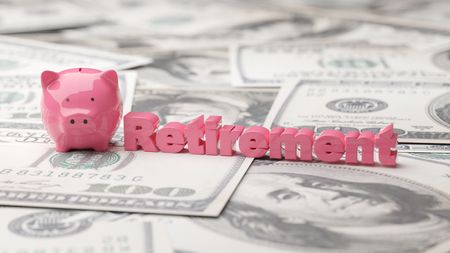Build a Solid Retirement Plan Around 4 Pillars of Success
Retirement planning should start with the income you need for your monthly expenses, but don't stop there.


The term “living paycheck to paycheck” has become the go-to phrase for people who are just getting by. They mostly have their monthly income figured out, but there’s no emergency fund — and they aren’t putting any money aside for big purchases or long-term savings. If an unexpected expense comes up, it either goes on credit or it can blow their whole budget out of whack.
We tend to think of it as a problem for working families, but the same thing can happen in retirement — even if you know your combined income streams will be enough to cover your basic needs. You’re really not prepared if you don’t have a plan for how you’ll pay for the rest of your costs — things you’ll need and things you want — as well as how you’ll keep growing your money for the future.
Every plan should have what I call the “Four Pillars of Retirement Success”: income, liquidity, safety and growth. Each has a role in your retirement — and when all four are in place, your plan has a better chance of holding up for the long haul.

Sign up for Kiplinger’s Free E-Newsletters
Profit and prosper with the best of expert advice on investing, taxes, retirement, personal finance and more - straight to your e-mail.
Profit and prosper with the best of expert advice - straight to your e-mail.
Here’s what you’ll need:
Income
When you create your retirement plan, making sure your monthly expenses are covered has to be your top priority. Your Social Security benefits and pension will take care of a large chunk of your costs, but you may need to use your investment savings to fund the rest. This money should come from reliable sources, such as CDs, Treasury bonds, annuities or high-grade corporate bonds, so you can be confident your bills will always be paid. And there should be an unwritten rule that this is money you won’t touch for anything other than your basic day-to-day costs.
Liquidity
Here’s where a lot of retirement plans go wrong. Sometimes it’s an unexpected expense — a medical bill or car repair — that can send you searching for funds. But it also could be a big trip you want to take with your family, or a new car or home renovation. Every plan should include money that’s set aside for emergency and discretionary expenses. If your entire nest egg is invested, you could end up losing money if you take withdrawals sooner than you planned. Or you might end up putting off getting the things you want and need. It’s a good idea to have a substantial emergency fund set aside (at least six to 12 months of income). But you also should try to have enough money available to fund the things you might want to do or buy in the first 12 to 18 months of your retirement. And if and when you use that money, you should have a strategy in place for how it will be replenished.
Safety
When you retire, you need to flip your mindset from accumulating as much money as you can to keeping the money you have. Your plan should address all the little ways life can chip away at your savings, including market volatility, taxes, inflation and health and long-term care costs. Talk to your financial professional about the many strategies and products available that can help you protect your nest egg. I often recommend using a time-segmented approach using three “buckets” of money. For example, let’s say you’re age 60 and have $1 million saved for retirement. You might put $88,000 into ultra-short bonds and money markets, $76,000 in short-term bonds, and $165,000 to $200,000 in annuities. This plan combines your short-, mid- and long-term needs and would provide $1,500 a month for life. The rest of the money would be allocated to growth.
Growth
Most Americans can expect their retirement to last 20 years or more, so your plan should include some way to stay invested for growth. This is a delicate balance in retirement: You don’t want to be too aggressive, but you will want to earn enough to stay ahead of inflation so you don’t lose purchasing power. Going back to the example above, you’d have approximately $636,000 of your $1 million remaining to allocate toward growth, perhaps with 59% in domestic and international equities, 37% in domestic and international fixed income, and 4% in cash. Besides diversifying your asset allocation, you also may want to talk to your adviser about using both active and passive management strategies.
Retirement should be a relaxing time when you pursue your dreams, try new things and enjoy the lifestyle you planned and worked hard for. It shouldn’t be a time for scraping by or worrying about where the money will come from every time a new expense comes up.
By building your plan with the Four Pillars of Retirement Success, you can be more confident in your spending from the first day of retirement to the last.
Kim Franke-Folstad contributed to this article.
Get Kiplinger Today newsletter — free
Profit and prosper with the best of Kiplinger's advice on investing, taxes, retirement, personal finance and much more. Delivered daily. Enter your email in the box and click Sign Me Up.

Bill Smith is the host of the television and radio show "Retirement Solutions." Author of "Knock Out Your Retirement Income Worries Forever." He is the CEO of W.A. Smith Financial Group and Great Lakes Retirement Inc. His firms specialize in retirement income planning, wealth management, wealth preservation and estate planning.
-
 Five Fun (and Cheap) Ways to Stay Busy in Retirement
Five Fun (and Cheap) Ways to Stay Busy in RetirementIt's not all about the big trips and special occasions. There are plenty of ways to enjoy yourself day-to-day in retirement without breaking the bank.
By Maurie Backman Published
-
 Why I'd Put My Tax Refund in a Money Market Account
Why I'd Put My Tax Refund in a Money Market AccountA money market account offers you the benefits of having access to your money when you need it, while earning a rate outpacing inflation.
By Sean Jackson Published
-
 How to Replace a Corporate Trustee (and Make Other Trust Changes)
How to Replace a Corporate Trustee (and Make Other Trust Changes)The right choice of trustee today may not be the right choice for trust beneficiaries in the future. Here's what you should know.
By Christopher F. Tate, J.D. Published
-
 How Building Liquidity Into Your Retirement Plan Can Pay Off
How Building Liquidity Into Your Retirement Plan Can Pay OffTo succeed in investing for retirement, you need time and discipline — liquidity can give you both.
By Samantha Compton, IAR Published
-
 Striking Oil in Opportunity Zones: Now Might Be the Best Time to Invest
Striking Oil in Opportunity Zones: Now Might Be the Best Time to InvestYou could unlock hidden wealth in QOZs with strategic oil and gas investments, potentially combining tax advantages with long-term growth in an essential industry.
By Daniel Goodwin Published
-
 What You Don't Know About Annuities Can Hurt You
What You Don't Know About Annuities Can Hurt YouLack of awareness leads many to overlook these potent financial tools, and with the possibility of running out of money in retirement, that could really hurt.
By Ken Nuss Published
-
 Three Keys to Logical Investing When Markets Are Volatile
Three Keys to Logical Investing When Markets Are VolatileFocusing on these market fundamentals can help investors stay grounded rather than being swayed by emotion or market hysteria.
By Dennis D. Coughlin, CFP, AIF Published
-
 Winning Strategies for Financial Advisers as Clients' Lives Evolve
Winning Strategies for Financial Advisers as Clients' Lives EvolveHow can the wealth management industry help make life transitions easier for the adviser and the client?
By David Conti, CPRC Published
-
 How Advisers Can Establish Relationships With HNW Prospects
How Advisers Can Establish Relationships With HNW ProspectsThese strategies can help to build influence with high-net-worth individuals, who are often looking to an adviser for insight rather than solutions.
By Jeremy Green, CFP®, CTFA, CLU®, CEBS®, AEP®, EA, MSFS Published
-
 The Three Biggest Fears Keeping Retirees Up at Night
The Three Biggest Fears Keeping Retirees Up at NightHere are the steps you can take to put those fears to rest and retire with confidence so you can relax and enjoy the life you've planned.
By Pam Krueger Published